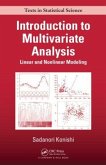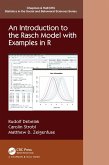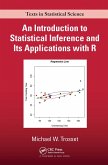
Gebundenes Buch
23. September 2025
Chapman and Hall/CRC

eBook, PDF
23. September 2025
Taylor & Francis eBooks
| Broschiertes Buch | 60,99 € | |
| eBook, ePUB | 44,95 € |
eBook, ePUB
23. September 2025
Taylor & Francis eBooks
Ähnliche Artikel

Gebundenes Buch
Linear and Nonlinear Modeling
6. Juni 2014
Chapman and Hall/CRC

Gebundenes Buch
21. August 2012
Chapman and Hall/CRC


Gebundenes Buch
An Excel GUI for WinBUGS
26. August 2011
Chapman and Hall/CRC

Gebundenes Buch
7. Juni 2022
Chapman and Hall/CRC

Gebundenes Buch
4. Auflage
20. April 2018
Chapman and Hall/CRC

Gebundenes Buch
23. Juni 2009
Chapman and Hall/CRC

Gebundenes Buch
26. Dezember 2007
Chapman and Hall/CRC


Ähnlichkeitssuche: Fact®Finder von OMIKRON
